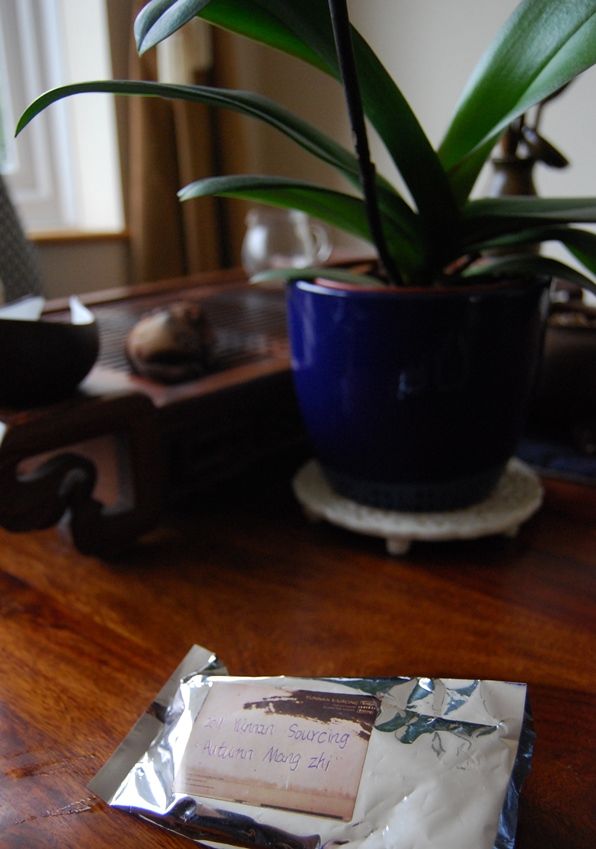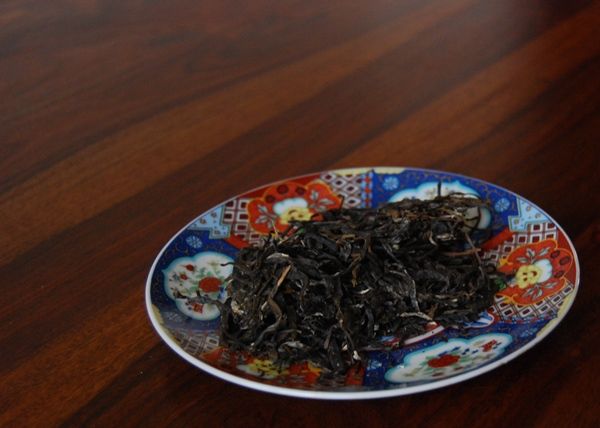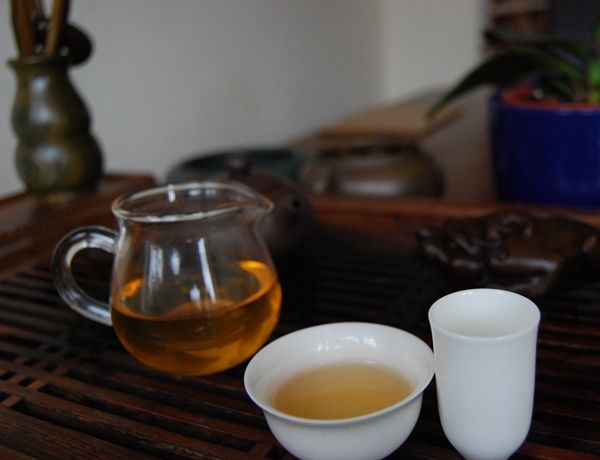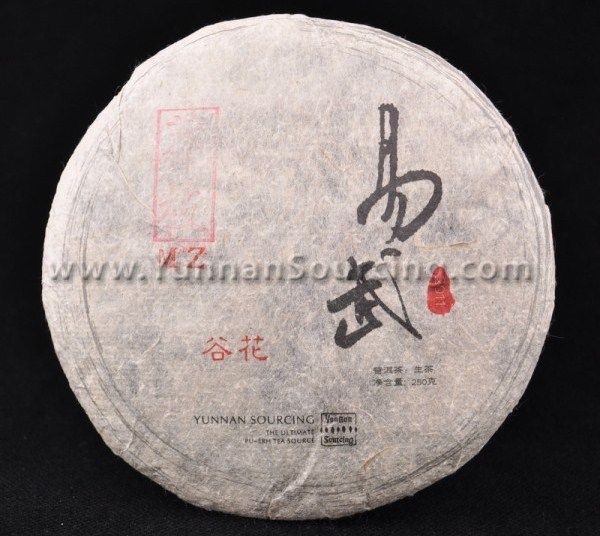This is one of three of the Yunnan Sourcing autumnal range which I enjoyed so much that I bought. This has become quite a rare event, given the limited space available on my shelves...
"Autumn Mangzhi" in Scott's handwriting
Mangzhishan is in the popular, oft-mentioned Mengla County of south-eastern Xishuangbanna, and yet you don't often see Mangzhi as being accredited in single-mountain cakes. One of the only examples I have tried was very recently the 2005 Yichanghao version. The latter was quite "orange", and therefore did not allow me to gain any insight of the characteristics of this mountain. Hopes remain for Scott's version, due to his preference for largely raw, lightly-processed shengpu.
A robust blend makes me happy
The blend is, shall we say, "rugged". It contains everything from tips to substantial sections of twig and branch. This is fine by me, because I like a little brusqueness in my pu'ercha. Not for me, the one-dimensional nature of tippy "high grade" (i.e., tiny-leaf) pu'ercha.
The maocha has a noteworthy aroma of fruitiness, which is strong despite the cold winter climate that traditionally mutes all scents in my tealeaves.
Darkening to this orange occurs only after contact with air
My hopes for an honest, "lightly processed" cake remain after seeing the pure yellow colour of the soup, which darkens actively in the air. The first infusion is an excellent combination of heavy tobacco and purple fruits, delivered by a thick body. While the complex characteristics of young pu'ercha can fade after the first few infusions (and are typically one of the first aspects of the cake to disappear during aging), this tea remains decent throughout the session.
"Guhua" indicating autumnal leaves
Even after considerable brewing, the leaves remain rich and low in their flavour. This may have benefitted from me using a considerable quantity of leaves: autumn tea is not as punchy as its springtime equivalent, which allows me to fill the pot, resulting in a thicker body than one might otherwise expect.
Amusingly, I note after drinking this cake that Mangzhi is close to both Xikong and Yibang villages, north of Yiwu, both of which are areas that make rich, challenging tea that I have enjoyed in the past. Perhaps it is no surprise, then, that neighbouring Mangzhishan should prove so pleasing to me.





3 comments:
Wonderful post. I recently enjoyed a sample of a Mang Zhi, which I am hoping to buy a cake of shortly. I had been considering at least a sample of this YS one, and now after reading your post think it is time to move forward with that thought. :)
A sample is definitely a safe place to start! Remember that one's impression of a tea, like most things, is a private affair, and I cannot guarantee that you will agree with my findings - it is a decent one, though, I think. :)
Do please let us know how you get on with it.
Toodlepip,
Hobbes
No accountability worries, my early days of baking and pastry making showcased the varying palates out there. "What do you mean you don't like macaron!!" Ha!
Post a Comment